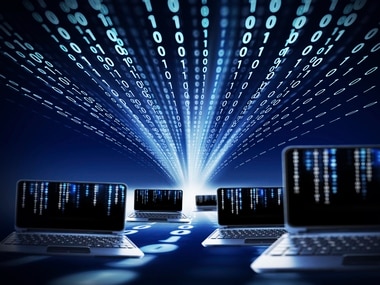By Satoshi Okamoto Since its inception in the early 1980’s, the Internet has been revolutionizing the way we live, work, learn and play. The advent of the World Wide Web (WWW), TCP/IP and the proliferation of personal computers contributed to an exponential growth of the data crisscrossing the Internet in mid 1990’s. Entering into 2000’s, we witnessed the strong demands of a portable WWW, which spurred mobile operators to launch an absolute mobile personal computer, namely a smartphone and a tablet, and then a phablet, a small evolution, which is trying to fill the gap between mobile devices and laptops. This course of evolution has been all about how humans engage with devices through the Internet as a vehicle. Now in 2015, there is a new emerging trend in which devices communicate with one another without human hands, fueling further the pace of the data growth over the Internet as well as the significance for industrial and economical impacts on society: the era of the “Internet of Everything”. What is the Internet of Things or IoT? IoT is the abbreviation of “Internet of Things”, a network of interconnected devices and people. Once connected, the devices can send data to each other, and they can analyze the data and choose to remotely manipulate the devices. IoT devices can also interact directly with each other without the need for human intervention. [caption id=“attachment_2121545” align=“alignleft” width=“380”]  Thinkstock[/caption] Since the number of devices connected to the Internet has skyrocketed and more people owning those devices have gone online, it has changed the way we work, learn and entertain. Cisco predicts that some 25 billion devices will be connected by 2015, and 50 billion by 2020. Gartner predicts that the total economic values that IoT produces will have reached 1.9 trillion dollars by the end of 2020. The concept of IoT is not esoteric. As technology advances, things that were not connected to the Internet get connected to it, and they can communicate with each other. Here “things” include devices with internally-embed computers and those without, but equipped with wireless tags capable of communicating with other things over networks. Some people consider IoT to be identical to Machine to Machine communication (M2M), but IoT is a larger concept than M2M the principal focus of which is on communication among devices and machines without human intervention. To explain this further, here’s some background about the three camps of IoT: 1. Wireless Tag: Kevin Ashton, co-founder of Auto-ID Center at MIT, firstly advocated IoT in 1999 and is a guru of the RFID technology. Those who came from this school of thought believe IoT emerged from the wireless tag technology and therefore they have a strong tendency of seeking for IoT as they exclude human interventions. 2. Computer-embedded: There are plenty of devices that embed computers interiorly. Those take several shapes, ranging from automobiles to smart home appliances, most of which have already been enhancing their values by connecting themselves to the Internet. Those who emphasize the architecture tend to see IPv6 as a central topic when it comes to IoT. 3. Wearable: Wearable computing has recently augmented its presence in the market. Although these wearable items can be categorized as computer-embedded, this camp stands out because of the expected astronomical impact on the economy as a whole. Those who put a strong emphasis on wearable devices like to explore IoT from the consumer-centric experience. Depending on which perspective you have in looking at IoT, the meaning of it varies. There is not one absolute definition of IoT, nor is any discussion superior to others. The important thing is IoT will show us an unprecedented world where myriad devices communicate with one another, with and without human intervention, in various fields. What does IoT mean for us? As IoT advances, increasing amounts of data are getting pushed into the Internet. In this hyper-connected world (as we call it), people and business take quick, secure and stable transactions for granted. Alas, the reality isn’t so. When we look at the nature of the Internet: congestion, performance fluctuation and lack of security, no single packet is promised for a comfortable journey. On the other hand, almost all industries are drawing their rosy futures about the world of IoT and yes, they’re increasingly dependent on the newly-emerging concept for both their existing and new businesses. IoT and India Taking note of the potential of IoT, the government of India had released its first IoT policy framework proposal in October, 2014. This document outlined the IoT framework in relation to the broader initiative it has been advocating entitled “Digital India.” This endeavor aims to create a market worth approximately $15 billion by the year 2020, where the number of connected devices would increase from about 200 million currently, to over 2.7 billion within the next five years. As a further step, the national government has also proposed that it will provide incentives and funding for the development of IoT companies. This includes an allocation of $21 million (50% basis) for any public-private partnership ventures that focus on at least five projects each from different categories such as water, environment, health, waste management, smart cities etc. over a period of three years. Given the rapid rise of India’s mobile network and app developer market, it would be interesting to see how the country fast evolves its own story of IoT and sets an example for other nations to take note of. (The author is product marketing manager at Akamai Technologies.)
Given the rapid rise of India’s mobile network and app developer market, it would be interesting to see how India fast evolves its own story of IoT and sets an example for other nations to take note of.
Advertisement
End of Article
Written by FP Archives
see more


)

)
)
)
)
)
)
)
)



